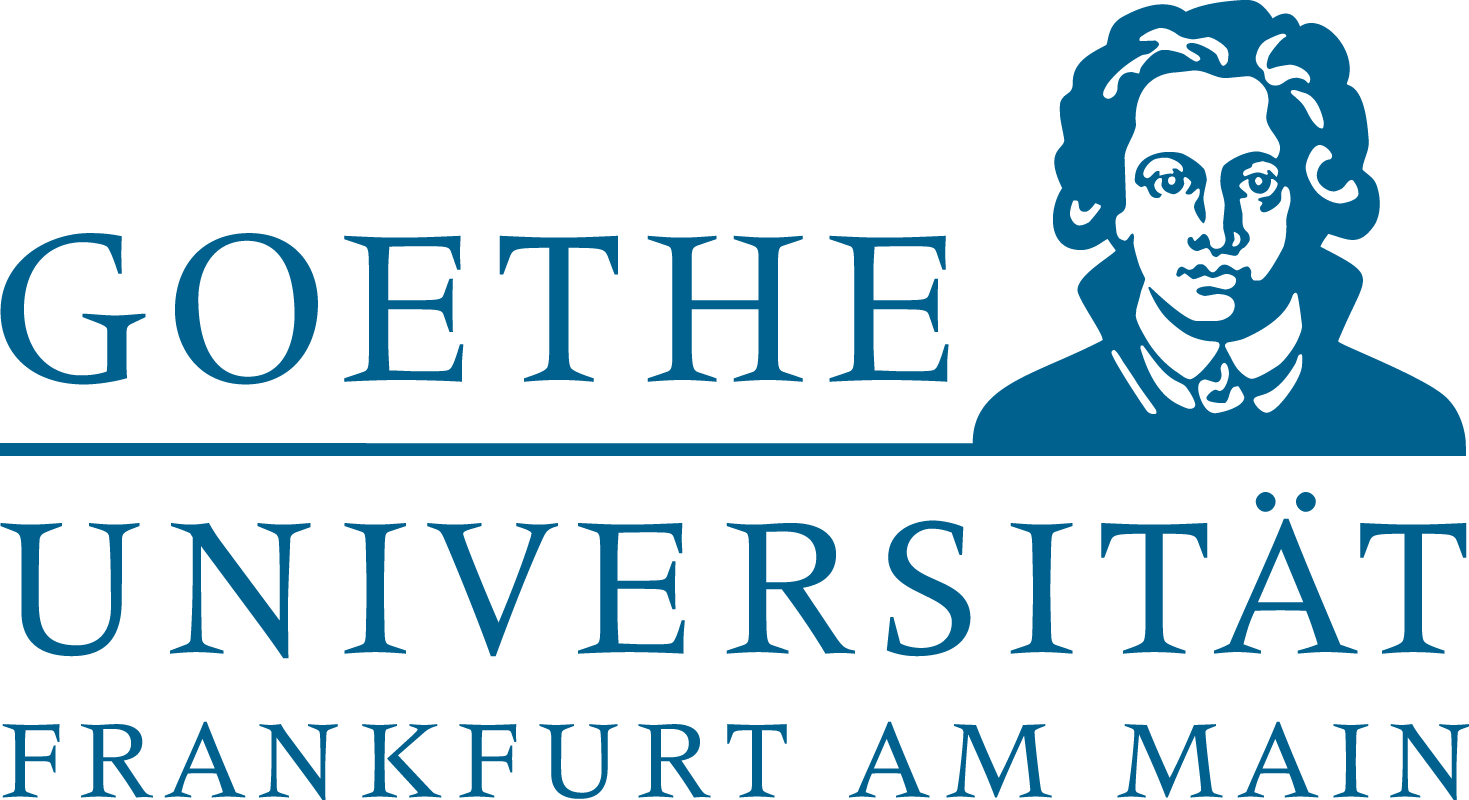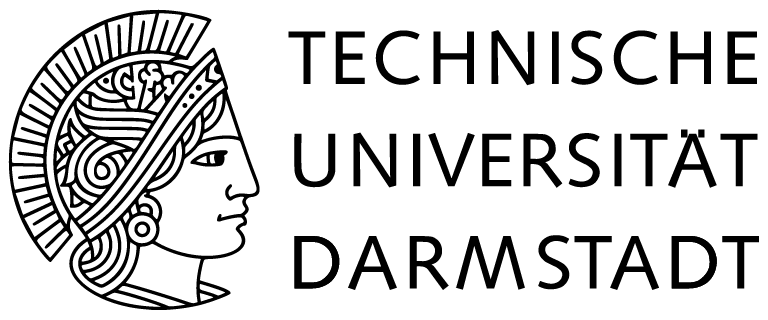Home » What we do » Working Area 1
Working Area
The interior of a neutron star is expected to exceed several saturation densities. Most of the relevant densities are not accessible to laboratory experiments, while theoretically they are challenging to describe consistently. It is simply not yet known what are the relevant degrees of freedom to describe properly the interior of a neutron star and there are, today, several open scenarios. To address this challenge, PIs of Work Area 1 propose new ways to constrain the properties of dense nuclear matter on both the theory and experiment sides.
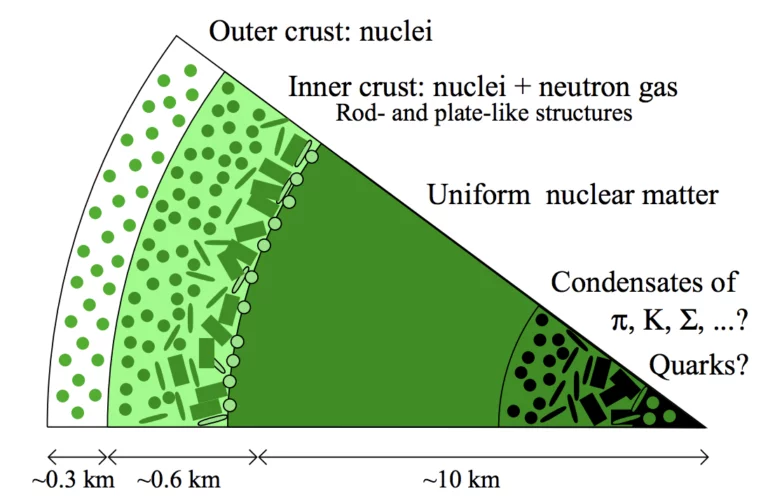
On one hand, we will extend our current theoretical description of the properties of nuclear matter in several directions: isospin asymmetry, finite temperature, phase transitions towards a quark-gluon plasma, strangeness as a possible degree of freedom and dynamical properties at the cross-road of the two Collaborative Research Centers of our universities CRC 1245 and CRC-TR 211. Short-range correlations in neutron-rich nuclei all be investigated as a possible new method to probe high densities.
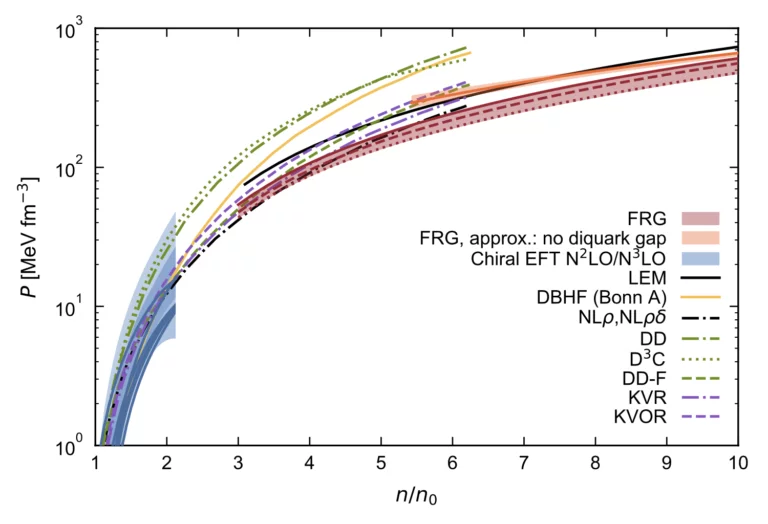
A recent achievement is the description of the equation of state (EOS) of symmetric nuclear matter based on quantum chromodynamics (QCD) with asymptotic behaviour consistent with chiral effective field theory (ChEFT) at low density and perturbative QCD at high densities, using the Functional Renormalization Group (FRG) method. This work predicts a maximum of the speed of sound at about 10 saturation densities. Such a maximum could be connected to the existence of phase transition in the interior of neutron stars. Although in active debate in the scientific community the occurrence of a QGP in the core of neutron stars could be considered more probable than exceptional.
Not only a transition from nucleonic to quark matter but also the appearance of strange quarks and hyperons inside neutron stars is expected to occur at large densities. Some of the equations of state shown here do contain strangeness as a degree of freedom, and lead to a different behaviour. This is also a point of debate today. The in-medium lambda-sigma conversion is expected to be of key importance, while very little is known experimental to constrain such a scenario at intermediate densities.
In the work area 1 of ELEMENTS, we will further develop the ChEFT and FRG frameworks both rooted into QCD and study the appearance of QGP, strangeness and pion condensates at large densities. Since the appearance of strangeness lack constrains on the lambda-nucleon interactions, we propose a proof of concept experiment to study them in hypernuclei. These theoretical inputs, together with astrophysical observations, will lead to a new generation of EOS.
Beyond the EOS, we will also study the dynamical properties of QCD matter with different methods, namely perturbative QCD and the FRG framework. The FRG allows to compute real-time quantities which will give us access to transport coefficients. The calculated quantities, viscosity and neutrino emissivity, will be benchmarked to the results from heavy-ion collision measurements performed in work area 2, and constrain the dynamics and cooling of NS systems.
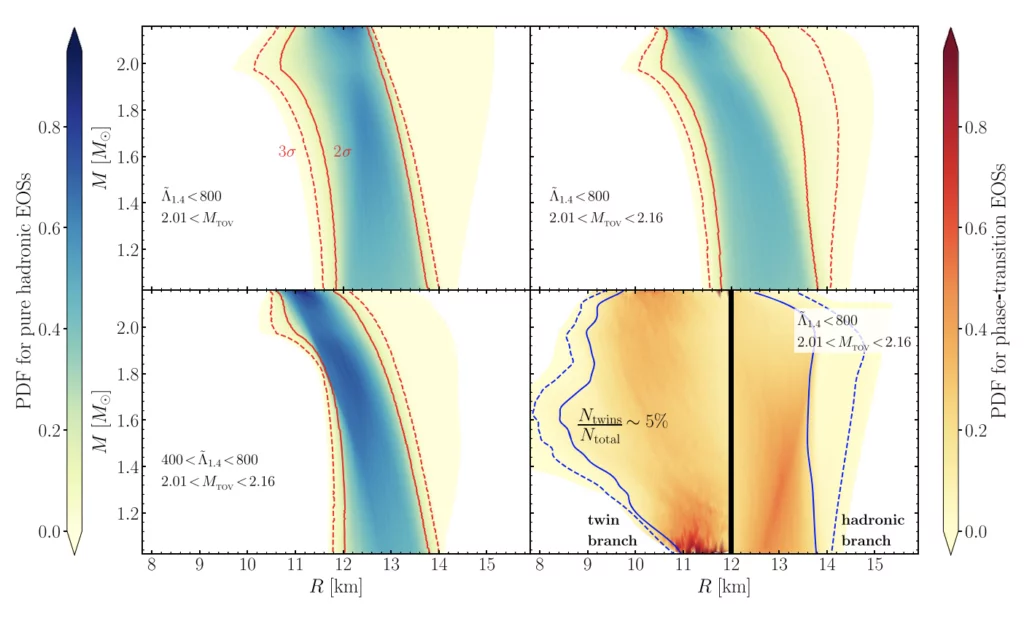
Probability distribution functions (PDF) showing the relation between the radius (in km) and mass of neutron stars (in solar masses Msun) computed with different EOS families contained at low density with chiral EFT equations of state. This work carried by PIs of ELEMENTS illustrates the very significant impact of EOS on the description of neutron stars. On the left without phase transition, on the right with a phase transition, constrained by different astrophysical observations: the tidal deformability (Λ˜) and the maximum mass observed (MTOV).
From microscopic dynamics to the EOS of dense nuclear matter
Working Area 1 Representative: Alexandre Obertelli
Working Area 1 Deputy Representative: Owe Philipsen
Principal Investigators: T. Aumann, J. Braun, H. Elfner, T. Galatyuk, G. Moore, A. Obertelli, O. Philipsen, L. Rezzolla, D. Rischke, A. Schwenk, J. Stroth
